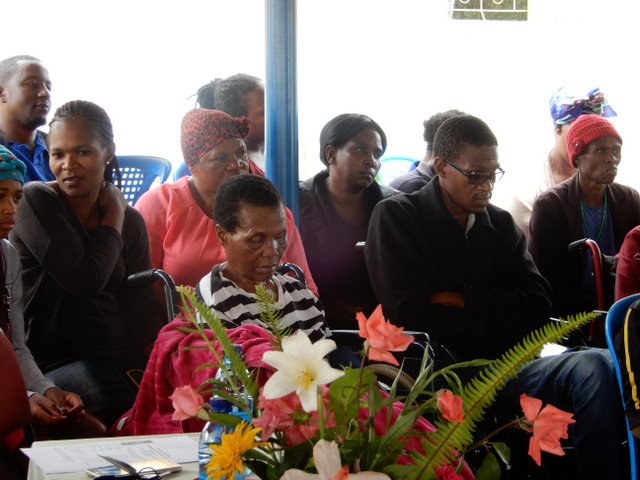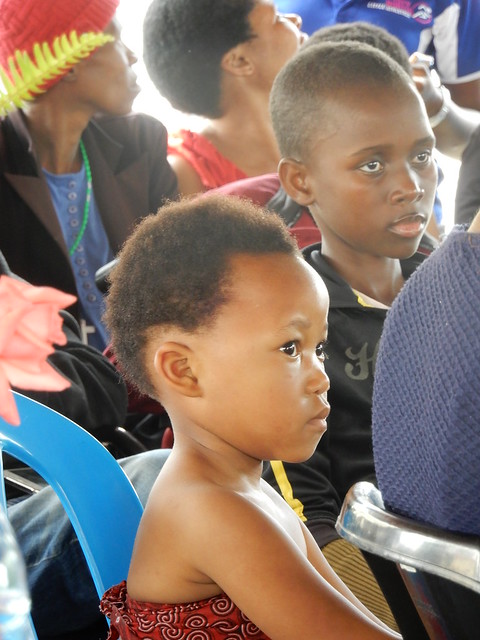I was invited to be the "guest speaker" at the commemoration of Aids Day at Hope House.
This was my speech
Having received the invitation of Sr Elsa Joseph to be the “guest speaker” at today's Aid's day at Hope House I started wondering which biblical text could be a good image of Hope House.
True that today, Hope House goes beyond the reality of HIV/Aids but one can never disconnect it fully nor can we forget how it all started.
I believe that a good passage – which is also familiar to all of us Christians and probably non-Christians – is the one of the “Good Samaritan”.
Jesus tells us this parable in the Gospel of Luke.
It all started when a lawyer asked Jesus: “Who is my neighbour?”.
Jesus then tells the story of a man on his way down from Jerusalem to Jericho who fell into the hands of bandits who left him half dead.
Three people pass on that road: a priest, a Levite and a Samaritan. The three of them see him. Two, though, pass by on the other side. The Samaritan instead see him and is moved with compassion.
I always love to tell the people that being moved with compassion is not just to say: “shame” as we do many times. The Samaritan does not seem to say anything but does a few things. He:
• goes to him
• bandages his wounds
• pours oil and wine on them
• lifts him onto his own mount (wonder about his strength!)
• takes him to an inn
• looks after him all night
• gives some money to the innkeeper in the morning and asks to look after him with the promise of paying himself for any extra expense
Now ... where is “Hope House” in this story?
I think, Hope House is ... the inn where the Good Samaritan took the man that was half dead to.
No one comes to this place on his / her own. There is always a Good Samaritan who brings the patients here. No one comes on his / her own because Hope House is for people badly wounded, “half dead” like the unknown man in the parable.
Everyone is “entrusted” by the innkeeper to look after them.
The innkeeper is not just one person. It is ... many! It is a team that includes Sr Elsa, nurses, volunteers, the security guards, those who look after the garden, who clean... Each one of those working here in one way or another should always think of this place as the “inn” where the Good Samaritan brought a person badly wounded.
But in my mind it is not just those working here. There are many people behind Hope House. People who come and bring donations. People who make sure the “extra expense” of the parable is covered because this is a non-profit place. People who come and bring prayers, a word of hope...
There are all the Hope House partners with whom we fight against HIV/Aids too and are represented today at this event.
There is also a board who meets regularly and sees that everything is going well and deals with any need and any present or future project.
These days I suddenly felt that in the parable we never talk about the “inn” but only about the Good Samaritan. I would happily called this place: “Hope House Inn” and write next to it Luke 10:35.
As we commemorate today “Aids day”, we need to celebrate all the initiatives that the tragedy of Aids brought to life. All the “Good Samaritans” and all the “Hope House Inns”. Aids day is a reminder of the goodness of people who never sat down to watch people suffer, never pass on the other side but found every possible way to be close to them.
There is though, something else. I feel I cannot just stop at this passage. There is a second one I feel we need to carry in our hearts. Catholics read it last Sunday on the feast of Christ the King: “the last judgement" on Matthew 25
We know the text. It is simple. It is solemn: the coming of the Son of Man in all his glory and with all his angels. Cannot be more solemn than that.
He then separates the people, some to his right, others to his left saying to some: come to me and to the others away from me.
The reason is simple: I was hungry, thirsty, sick ... and you came and had mercy or did not have mercy.
All of them ask the same question: when did we see you? When did we see you and did or did not help you? We know the answer: in so far as you did this to one of the least of these brothers of mine, you did it to me.
"You did it to me"
Mother Theresa of Calcutta talks about this parable as the Gospel in five words: you did it to me.
Aids Day for us is not just about helping the sick but about seeing Jesus in them. Hope House is a special place where we all have the opportunity to meet Jesus.
While some would only think of meeting him with power and glory, Jesus chooses to identify with the badly wounded.
The text is an invitation to all of us and not just to some. Even those that are sick here should remember it and look at their neighbors at Hope House as Jesus next to them.
Let us in this day celebrate the goodness of humanity and also the gift of our faith that keeps our hope strong and alive looking forward to the day when Aids will be only part of our history.
Click below for photos of the event






